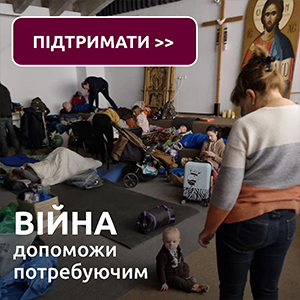With creation of three new metropolitanates, UGCC is heading toward approval of patriarchal structure
Wednesday, 30 November 2011, 18:25 On November 29, 2011, head of the UGCC Patriarch Sviatoslav raised the Lviv Major Archbishopric to the dignity of metropolitanate. The metropolitanate is headed by Archbishop Ihor (Voznyak). It consists of the Lviv Archeparchy, Sokal-Zhovkva, Sambir-Drohobych and Stryi eparchies. In early December, metropolitans will be enthroned in Ivano-Frankivsk and Ternopil.
On November 29, 2011, head of the UGCC Patriarch Sviatoslav raised the Lviv Major Archbishopric to the dignity of metropolitanate. The metropolitanate is headed by Archbishop Ihor (Voznyak). It consists of the Lviv Archeparchy, Sokal-Zhovkva, Sambir-Drohobych and Stryi eparchies. In early December, metropolitans will be enthroned in Ivano-Frankivsk and Ternopil.
“The UGCC is heading to the approval of the patriarchal structure, and the opportuneness of these efforts is recognized by the Roman Pontiff,” said His Beatitude Sviatoslav (Shevchuk) in a decree on the declaration of three new metropolitanates. And to further strengthen the patriarchal structure of the UGCC, the Synod of Bishops decided to establish on the lands of Kyiv-Halych three new metropolitanates, namely, of Lviv, Ivano-Frankivsk, and Ternopil-Zboriv – and to raise the Ivano-Frankivsk and Ternopil-Zboriv eparchies to archeparchies. These decisions are blessed and approved by Pope Benedict XVI.
The decree on the declaration of three new metropolitanates, which was read during the Liturgy by Bishop Bohdan (Dziurakh), Secretary of the Synod of Bishops, includes the history of the UGCC, its difficult path, the legalization of the UGCC and the return of the See of the UGCC primate to Kyiv.
Since Kyivan Rus’ adopted Christianity in the Byzantine Rite, its church had the status of metropolitanate of the Constantinople Patriarchate with a See in Kyiv. The head of the church was given the title Metropolitan of Rus' (later Kyiv), with whom all the bishops of the Kyivan state concelebrated. In 1303, the Galician Metropolitanate appeared in the Galician-Volyn principality, and from 1401, the head of the Church of Kyiv received the title Metropolitan of Kyiv, Halych, and All Rus'.
Metropolitan Isydor, who participated in the Ferrara-Florence unification council in 1439, bore the title of Metropolitan of Kyiv and Halych. Metropolitan Mykhailo (Rahoza), who confirmed the unification of the Kyivan Church with the Roman Apostolic See in Brest in 1596, was also Metropolitan of Kyiv, Halych and all Rus’.
In view of the persecution the Uniate Kyiv-Halych Church under Tsar Peter I and Catherine II, Pope Pius VII in 1808 blessed the regular division of the Kyiv-Halych metropolitanate. The Greek Catholic eparchies of Galicia – Lviv, Przemysl and Kholm – were removed from under jurisdiction of the Uniate Metropolitan in Tsarist Russia, the Galician metropolitan was restored, and the titles of Galician Metropolitan, Archbishop of Lviv and the Bishop of Kamianets-Podilsk with the See in the Cathedral of St. George in Lviv were recognized. In this way, through the recognition of all rights and powers which belonged to the Metropolitan of Kyiv and Halych, the legal continuity of the UGCC was secured, which later gave grounds to Galician primates, in particular, Metropolitan Andrey (Sheptytsky), to regard themselves as administrators of the temporarily vacant throne of Kyiv and its episcopate, and St. Pope Pius X confirmed this right of the Galician Metropolitan in 1908.
In 1939-1941 Metropolitan Andrey Sheptytsky appointed exarchs for pastoral care of the faithful on the lands of Great Ukraine, Belarus, and Russia, and worked in trying to return the title of Metropolitan of Kyiv and Halych. Similar requests were repeated by a UGCC delegation in December 1944. Unfortunately, all these efforts led to the imprisonment of the hierarchs and started the era of martyrdom, underground activity and the heroic confrontation with the wicked totalitarian regime, which lasted almost half a century.
Galician Metropolitan Josyf (Slipyj), after his release from 18 years in prisons and his arrival in Rome in 1963, was recognized as the Major Archbishop, equal to patriarch in rights based on powers that Kyivan metropolitans always had.
His successor Myroslav Ivan (Lubachivsky), having returned to Lviv in 1991, began restoring structures of the Kyiv-Halych Metropolitanate, which, on the basis of historical continuity and fairness, provided for the return of its leadership in Kyiv. The return of the See of the UGCC head to the capital of Ukraine took place in 2005 under His Beatitude Lubomyr (Husar). This decision of the Synod of Bishops of the UGCC was blessed by Pope John Paul II.
UGCC Information Department
Background Until now the Lviv Metropolitanate will include, besides the Lviv archeparchy, the Sokal-Zhovkva, Sambir-Drohobych and Stryi eparchies. The St. George’s Cathedral in Lviv will remain its cathedral and Bishop Ihor (Voznyak) will be its Archbishop and Metropolitan. The Ivano-Frankivsk Metropolitanate will include the Ivano-Frankivsk Archeparchy and the Chernivtsi-Kolomyia eparchy. The cathedral of the metropolitanate will be the Holy Resurrection Cathedral in Ivano-Frankivsk, and Bishop Volodymyr (Viytyshyn) will be the Archbishop and Metropolitan, The Ternopil-Zboriv metropolitanate will included the Ternopil-Zboriv archeparchy and the Buchach eparchy. The cathedral of the metropolitanate will be the Cathedral of the Immaculate Conception of the Blessed Virgin Mary in Ternopil, and Bishop Vasyl (Semeniuk) will be the Archbishop and Metropolitan.
LATEST NEWS
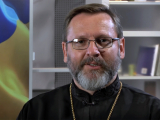
We can imagine what the prayer of the prisoners in the Russian torture centers in the Ukrainian Kharkiv region was like – Head of the UGCC on the 206th day of the war 17 September
A vast cemetery, a mass burial, was found near the city of Izyum, in which more than 400 innocently killed and tortured people have already been...
-
 Глава УГКЦ у 158-й день війни: «Нехай Господь прийме з уст нашої Церкви псалми та моління за всіх тих, які особливо просять нашої молитви»
Глава УГКЦ у 158-й день війни: «Нехай Господь прийме з уст нашої Церкви псалми та моління за всіх тих, які особливо просять нашої молитви»
-
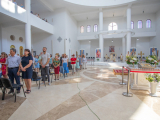 «Сила, яка походить із вірності Христові, є стержнем, який ніхто не може зламати», – Блаженніший Святослав
«Сила, яка походить із вірності Христові, є стержнем, який ніхто не може зламати», – Блаженніший Святослав
-
 Глава УГКЦ у 157-й день війни: «В ім’я Боже ми засуджуємо звірства в Оленівці і світ повинен це засудити як особливий вияв дикості й жорстокості»
Глава УГКЦ у 157-й день війни: «В ім’я Боже ми засуджуємо звірства в Оленівці і світ повинен це засудити як особливий вияв дикості й жорстокості»
-
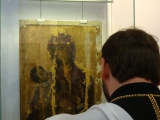 «Боже, почуй наш плач і поспіши нам на допомогу і порятунок!», – Глава УГКЦ у 156-й день війни
«Боже, почуй наш плач і поспіши нам на допомогу і порятунок!», – Глава УГКЦ у 156-й день війни
-
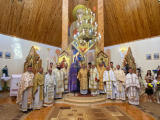 «Бог йому дав серце і душу українського народу»: відбулася щорічна проща до Прилбичів з нагоди уродин митрополита Андрея Шептицького
«Бог йому дав серце і душу українського народу»: відбулася щорічна проща до Прилбичів з нагоди уродин митрополита Андрея Шептицького
-
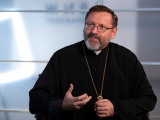 Глава УГКЦ: «Я горджуся українськими патріотами, які без найменшої краплі ненависті готові захищати своє»
Глава УГКЦ: «Я горджуся українськими патріотами, які без найменшої краплі ненависті готові захищати своє»
-
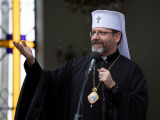 Блаженніший Святослав закликав українську молодь скласти присягу на вірність Христові
Блаженніший Святослав закликав українську молодь скласти присягу на вірність Христові
-
 Глава УГКЦ у 155-й день війни: «Помолімося, щоб не втратити скарбу віри князя Володимира»
Глава УГКЦ у 155-й день війни: «Помолімося, щоб не втратити скарбу віри князя Володимира»
-
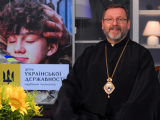 Блаженніший Святослав у День державності України: «Наша Держава – це для нас питання життя або смерті»
Блаженніший Святослав у День державності України: «Наша Держава – це для нас питання життя або смерті»
-
 Глава УГКЦ у 154-й день війни: «Нехай Господь Бог прийме у свої вічні обійми журналістів, які віддали за правду своє життя в Україні»
Глава УГКЦ у 154-й день війни: «Нехай Господь Бог прийме у свої вічні обійми журналістів, які віддали за правду своє життя в Україні»
-
 Глава УГКЦ у 153-й день війни: «Принесімо наш біль перед Боже обличчя і будьмо певні, що Він нас вислухає»
Глава УГКЦ у 153-й день війни: «Принесімо наш біль перед Боже обличчя і будьмо певні, що Він нас вислухає»
-
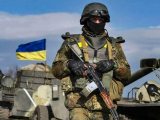 Глава УГКЦ у 152-й день війни: «Помолімся молитву заступництва за наших воїнів»
Глава УГКЦ у 152-й день війни: «Помолімся молитву заступництва за наших воїнів»
-
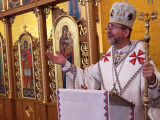 «Віруюча людина не може бути байдужою, коли бачить страждання іншої людини», – владика Богдан Дзюрах
«Віруюча людина не може бути байдужою, коли бачить страждання іншої людини», – владика Богдан Дзюрах
-
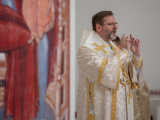 «Серед нашого страждання творімо простір для прояву Божої всемогутності», – Глава УГКЦ у 6-ту неділю після П’ятдесятниці
«Серед нашого страждання творімо простір для прояву Божої всемогутності», – Глава УГКЦ у 6-ту неділю після П’ятдесятниці
-
 Глава УГКЦ у 151-й день війни: «Російське віроломство ми перемагаємо силою любові до нашої Батьківщини»
Глава УГКЦ у 151-й день війни: «Російське віроломство ми перемагаємо силою любові до нашої Батьківщини»

